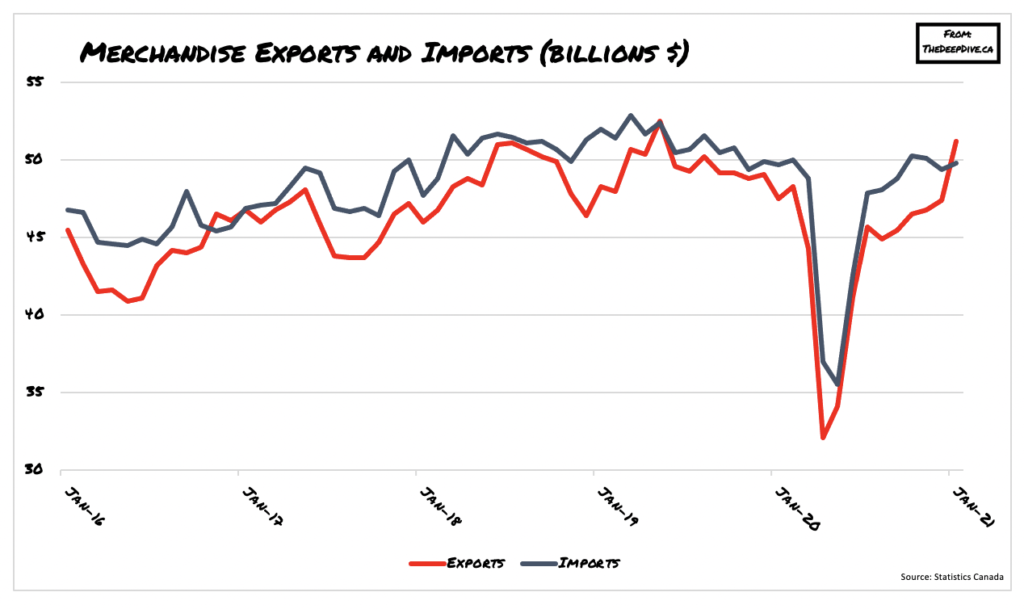For the first time since May 2019, Canada’s trade surplus topped $1.4 billion in January, following what has been a considerable increase in exports amid the pandemic.

According to Statistics Canada, total exports rose by 8.1% to $51.2 billion, with notable increases in all categories. The January increase was the largest jump in exports since the economic rebound noted during the summer of 2020, when a number of restrictions were lifted amid a declining trend of Covid-19 infections. In fact, despite the extensive fluctuations noted throughout 2020, the January increase was the largest on record since August 1995.

The month of January saw the exports of aircraft and other transportation equipment and parts rise by 72.3%, as a Canadian airline retired a lineup of used aircraft from its fleet and exported the airlines to the US. Although it is atypical for such a concentrated level of exports in one category to occur within the span of a month, Statistics Canada notes that similar shipments have occured in the short and medium run.
Consumer goods exports increased by 11.6% in the first month of the year, largely due to elevated exports of miscellaneous goods and supplies, which rose by $437— the biggest increase in five years. Although this category is reflective of a wide range of goods, it also accounts for gold bars sold to individual investors at the retail level, which have been surging amid a higher demand stemming from the US.
Energy exports in January were up by 5.9%, largely due to increased exports of crude oil and higher prices. Although volumes exceeded pre-pandemic levels, subdued price levels caused the entire category to lag behind.

In the meantime, exports of forestry products and building and packaging materials have been surging amid the pandemic, rising by 10.7% in January. The increase was largely due to lumber exports, which rose by 30.4%, reaching a record high of $2.1 billion. The abnormal housing boom has caused demand for building materials to skyrocket, as stay-at-home orders caused consumers to either purchase more spacious homes or to remodel their existing dwellings.

What has been two consecutive months of the declines, total imports increased by 0.9% in January, rising to $49.8 billion. Energy product imports led the gains, with an increase of 20.5%. Imports of electronic and electrical equipment and parts were also up in January, as Canadians succumbed to their homes amid stay-at-home orders looked for new sources of entertainment.
The notable gain in Canada’s total exports has been largely due to reinforced trade between the US, as exports to the country increased by 11.3% to $37.2 billion. This has been the highest share of exports since September 2019, amid a sharp rise in shipments of aircraft, gold bars, crude oil, and lumber. Conversely, imports from the US only increased by 0.4% to $31 billion, causing Canada’s trade surplus to double from $2.5 billion to $6.2 billion in January, marking the largest surplus since September 2008.
Information for this briefing was found via Statistics Canada. The author has no securities or affiliations related to this organization. Not a recommendation to buy or sell. Always do additional research and consult a professional before purchasing a security. The author holds no licenses.









